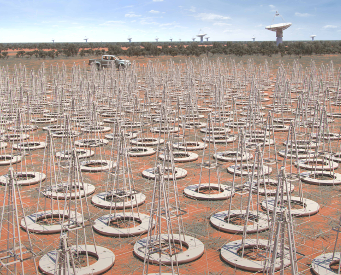
The Science
The upcoming Square Kilometre Array (SKA) will be the largest radio telescope in the world. An international team recently used Summit, the world’s most powerful supercomputer, to simulate the massive amounts of data the SKA will produce. This intense influx of information resulted in a performance bottleneck, which the team solved by reducing, processing, and storing the data using the ORNL-developed Adaptable IO System (ADIOS), an open-source input/output framework.
The Impact
The SKA simulation on Summit marks the first time radio astronomy data have been processed at such a large scale and proves that scientists have the expertise, software tools, and computing resources that will be necessary to process and understand real data from the SKA. By generating 2.6 petabytes of data at 247 gigabytes per second, the researchers emulated the behavior of SKA antennas. Eventually, the international project team will manage close to a million antennas to conduct unprecedented studies of astronomical phenomena.
PI(s)/Facility Lead(s): Ruonan Wang
ASCR Program/Facility: OLCF
Funding: OLCF, SciDAC RAPIDS
Publication(s) for this work: R. Wang, A. Wicenec, and T. An, "SKA shakes hands with Summit.” Science Bulletin 2019.



